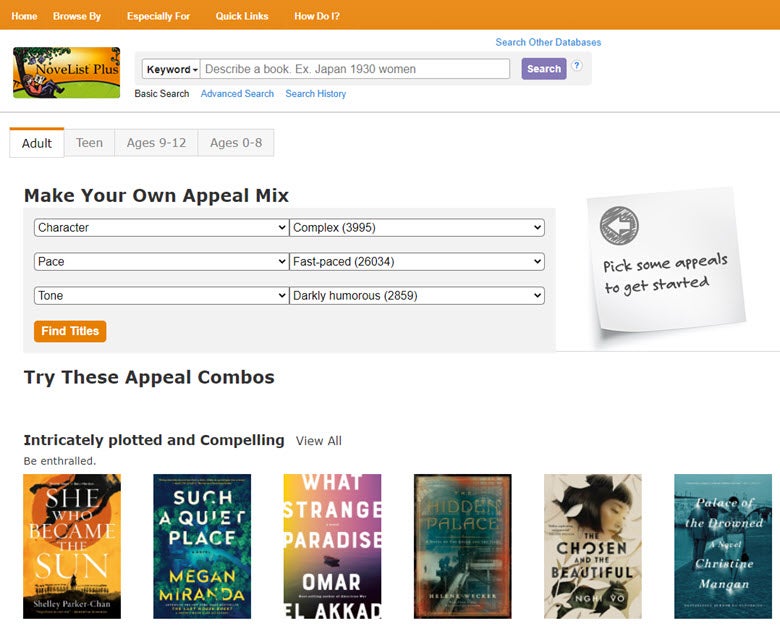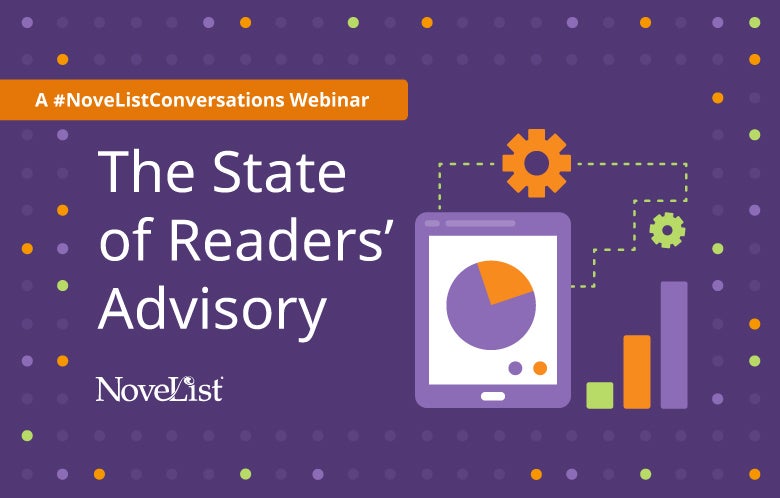Earlier this year, we launched a survey of public libraries aimed at exploring their services to readers. Readers’ advisory is a core service of libraries, tied to the essential mission of providing books to the community, so it’s critically important to understand what’s working and what’s changing. Some of what we learned might not surprise you (for example, you’re surely aware that COVID forced most libraries to shift their services to virtual) but some of what we learned may just inspire you with new ideas.
First, a quick look at some basic stats on the state of readers’ advisory today:
- ALL libraries do some form of readers’ advisory, but the most common is in-person (60%).
- Most libraries (82%) say that all staff are expected to provide readers’ advisory service; 19% have a dedicated readers’ advisory staff/team.
- As a result of COVID, most libraries added or expanded their reader services, but the most common new service is curbside service (86%) — more on this below!
- 60% of respondents say that readers’ advisory is very important to their library (this is up from 45% in 2013).
You can download a copy of the full report here.
The key takeaway is that readers’ advisory is more essential than ever and libraries are developing some new, wonderfully creative services.
And in case you’re wondering about exactly who answered the survey, there were about 1200 respondents from public libraries of all sizes, representing all regions of the U.S. and Canada. Many thanks to our partners who helped us distribute and promote the survey: RUSA CODES, LibraryReads, and ARRT.
Survey respondents told us about some of the innovative reader services they’ve been developing. Here are a few of the fantastic ideas you may want to adopt at your library:
1. Curbside pickup service, paired with suggestions for further reads
As mentioned above, curbside service is the most common new service introduced during the pandemic. Because everyone likes it so much, this service will likely continue even beyond re-opening. Besides being ultra-convenient for patrons, it also offers libraries the opportunity to tuck in a flyer or bookmark of read-alike ideas. These can be customized to each person, based on what’s in their pickup bag. Think of it as giving them a reason to come back and check out more books!
2. Book bundles (aka grab and go bags)
The inspiration for book bundles likely came from wanting to get people quickly in and out of the library, but even in non-pandemic times, it is a fantastic time-saver for busy patrons. The library puts out pre-selected bundles of books, and the patron grabs the whole thing and goes! Bundles can be theme-based, genre-based, age-based, and so on. Two specific bundle ideas we loved: “Read Woke” bundles packed with diverse, inclusive reads, and bundles based on appeal terms such as “Dark and Disturbing” or “Atmospheric and Descriptive.” (Tip: the appeal mixer in NoveList Plus is the perfect tool for this!)

3. Subscription boxes
The basic idea: you sign up and then regularly receive a box of stuff that has been curated by experts. Boxes like these are readily available for food, clothes, jewelry, just about anything. Extending the idea to the library, you can imagine the possibilities for including books and more. Libraries told us that they have been offering things like: literacy boxes (books paired with learning activities), teen boxes (snacks are heavily featured in these), and comfort boxes (gentle stories plus tea or cocoa). Consider partnering with local businesses to provide the free stuff. One tip: be sure to include a flyer or newsletter from your library in each box highlighting upcoming events or read-alikes from the collection.
4. Reading challenges, anytime and often
Libraries have implemented summer reading challenges forever, but what’s new is the extension of this idea year-round. Many libraries are providing all kinds of challenges, including winter reading challenges, diverse reading challenges, and book bingo challenges. At the beginning of 2021, NoveList offered its own, along with support material in LibraryAware (search “book challenge”).
5. Hyper-local readers’ advisory
One thing we know about libraries — each of them exists in a unique community with unique patrons and a unique local scene, which offers an opportunity to tailor your reader services to those local needs. The library is perfectly positioned to be the one doing this as a way to promote the local cultural and economic growth. Some libraries have started interviewing local personalities like the mayor or business owners about what they’re currently reading. Others host local author showcases, featuring books written by local authors. Tuning into your region is something that gives your library an opportunity to go beyond bestsellers to point patrons at what’s special about their community.
We’ve pulled out these ideas and more in our newly updated RAx Guide, designed to help you assess how each staff member can make reading and readers’ advisory a priority and how to structure your services to serve the different needs of the people in your community. We’ve also gathered librarians from across the country to discuss the survey, what their library has been doing for readers’ advisory, and how they see the future of RA going. Please join us for that discussion.

Sign up for our webinar: The State of Readers' Advisory. Register now!
Danielle Borasky is the Vice President of NoveList. She is currently reading The Vanishing Half by Brit Bennett.


